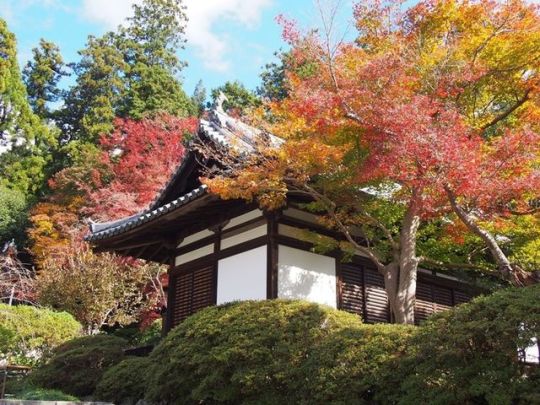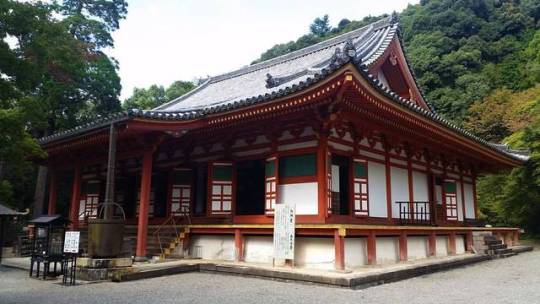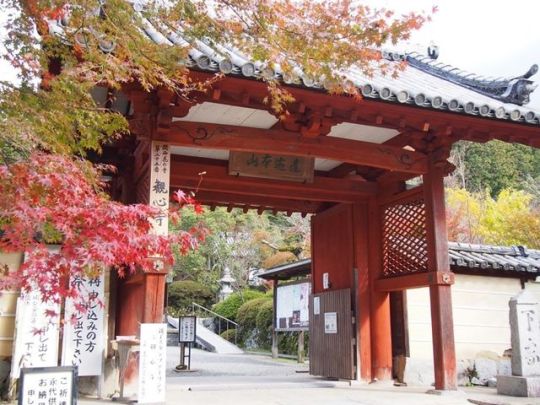#kanshinji
Text

A sculpted image of Nyoirin Kannon Bodhisattva (如意輪観音菩薩) dating to the 9th century at Kanshinji Temple (観心寺) in Osaka
Una imagen esculpida del Bodhisattva Nyoirin Kannon (如意輪観音菩薩) que data del siglo IX en el templo Kanshinji (観心寺) en la ciudad de Osaka
Image from Image from "貞観彫刻 (日本の美術7)" [Jōgan Sculpture (The Arts of Japan 7] by 倉田文作 [Kurata Bunsaku], published by 小学館 [Shōgakukan], 1971, page 96
#japanese art#buddhist art#arte budista#arte japonés#如意輪観音菩薩#如意輪観音#nyoirin kannon#観音菩薩#観音#kannon#avalokitesvara#大阪市#osaka#観心寺#kanshinji#真言宗#shingon
31 notes
·
View notes
Text

Standing Kannon Bosatsu (Avalokiteśvara), 9th century
Heian period, Japan
Wood, pigments, carved eyes
Height: 153.5 cm
Important Cultural Property
Since the Asuka period (592–710), various Buddhist statues were created and worshipped in Japan. Statues of Kannon Bosatsu (Avalokiteśvara), particularly those of the Eleven-headed Kannon (Ekadasamukha Avalokiteśvara) were the most popular since he was believed to relieve sufferings such as diseases and disasters.
In every region and time, there are many known statues of Kannon Bosatsu and eleven-headed Kannon, and they became popular objects of worship. This image is said to have been the main image of Kanno-ji temple. The temple was founded by Ichien (803–67), a priest of Daian-ji temple in Nara, on the western bank of the Kamo river in Kyoto in the Jogan era (859–77). During the late Heian period, many aristocracies visited Kanno-ji temple to worship this image. Around its topknot, there are traces of diminutive faces attached. This indicates that the statue was originally an eleven-headed Kannon. When Kanno-ji temple was destroyed by a fire in 1531, this image was relocated to Seiwa-in temple. In the early modern times, the statue again began to attract worshippers as one of the thirty-three Kannon in Kyoto.
This statue has features typical of the single block works of the early Heian period. A single block of Japanese nutmeg (kaya nucifera) is used for the entire body, from the top of the head to the foot tenons. The statue is solid without interior hollowing. Although the statue now stands with the tenons attached to the pedestal, the statue and the pedestal were originally carved from the same piece of wood. The statue has a thick lower body with long legs. Gently twisting his waist, Avalokiteśvara steps slightly forward with his right leg. The sash and skirt-like garment have rolling-wave drapery pleats comprising of large, round wave-like curves and small ridged curves carved in an alternating pattern. These waves have a simple and organized design.
The tight and elastic body resembles those of the seated Nyoirin-kannon (Cintāmanicakra) in Kanshin-ji temple in Ōsaka and the seated statues of Godai-kokuzo-bosatsu (Akasagarbha) in Jingo-ji temple in Kyoto, both produced during the Jōwa era (834–48). However, the fine-featured face and sophisticated rolling-wave drapery pleats imply that this statue was produced during the late 9th century. This is a masterpiece of the early Heian period, when Buddhist sculpture arts reached its climax.
Collection of the Kyushu National Museum
#Avalokitesvara#Buddhism#bodhisattva#figure#religion#wood#觀音#Heian period#Japanese#art#art history#sculpture#carving#mixed media#gilding#Kannoji#Kanshinji#Jingoji#9th century#Kannon#Kyushu National Museum
0 notes
Photo

Nyoirin Kannon Bosatsu
9th Century, Heian period
Kanshinji Temple, Osaka.
#bodhisattva#buddha#buddhism#buddhist#art#history#japan#japanese#archaeology#schulpture#religion#religious#mikkyo#nyoirin kannon#osaka#kanshinji#temple
154 notes
·
View notes
Photo

11月19日、観心寺の紅葉。 #アローラル三共住販 #河内長野 #河内長野市 #イルカ #かわちいいね #奥河内 #観心寺 #紅葉 #見頃 #kawachinaganoshi #kawachinagano #osaka #japan #photooftheday #tbt #follow #followme #kanshinji #kouyou
#イルカ#kawachinagano#photooftheday#河内長野市#紅葉#tbt#followme#osaka#japan#かわちいいね#観心寺#kanshinji#kouyou#奥河内#アローラル三共住販#follow#kawachinaganoshi#河内長野#見頃
0 notes
Video
youtube
(via Festival Kashyouzanmai (Fogo Sagrado) Toyohashi)
#toyohashi#templo#toyohashi festival#玉龍山観真寺#gyokuryuuzan kanshinji#kashyouzanmai#fogo sagrado#japan guide#guia japão#aichi
0 notes
Photo

This is the kondo or main hall of Kanshin-ji temple near my home in Kawachinagano, Osaka Prefecture. Kanshin-ji was founded at some point during the Nara Period between 646-794 C.E. by a monk called En-no-Ozunu, also known as En-no-Gyoja. Later in 827, it was renovated by Jichi-e who was a disciple of the legendary monk Kobo Daishi. The temple is also closely associated with Kusunoki Masashige, a favourite subject of mine, who studied here in his youth, performed his own renovations and whose head is buried in a special Nanko-Kubizuka grave on the grounds. The grave of the Emperor Go-Murakami of the Southern Court from the Nanboku-Cho period is also buried up a steep trail at the rear of the grounds. The main hall of Kanshin-ji is built in a unique style called Kanshinji-Zukuri. This is a mix of Japanese, Chinese and Indian Buddhism working in perfect harmony and is registered as a national treasure. It is also the oldest national treasure building in Osaka Prefecture. The current building dates back to the Muromachi Period (1337-1573). The main focus of worship here is also a national treasure. This is the Nyoirin Kanzeon Bosatsu, an aspect of Kannon, Goddess of Mercy. It is said to be one of the finest Heian Period (794-1185) statues in existence and is only put on public display for two days a year, 17-18 April. #japan #japanesehistory #traveljapan #japantravel #buddhism #temple #historynerd #osaka #日本 #寺 #大阪 #歴史 #河内長野 #奥河内 #感心寺 (at Kanshin-ji)
#大阪#temple#buddhism#寺#感心寺#japan#historynerd#osaka#歴史#traveljapan#奥河内#japantravel#日本#河内長野#japanesehistory
0 notes
Video
mossy stone lantern by Atsuhiko Takagi
Via Flickr:
taken on 2015/9/21. Minolta X-700, MC W.ROKKOR 35mm 1:1.8, Kodak PORTRA400
#Nippon#Japan#Kawachi Nagano#Kanshinji#temple#moss#stone lantern#green#Minolta#Rokkor#film#Kodak#河内長野#観心寺#苔#石燈籠
27 notes
·
View notes
Photo

紅葉の観心寺。 #アローラル三共住販 #河内長野 #河内長野市 #イルカ #かわちいいね #奥河内 #観心寺 #紅葉 #見頃 #kawachinaganoshi #kawachinagano #osaka #japan #photooftheday #tbt #follow #followme #kanshinji #kouyou
#follow#kawachinaganoshi#tbt#かわちいいね#kouyou#kanshinji#アローラル三共住販#見頃#japan#photooftheday#followme#イルカ#観心寺#河内長野#奥河内#河内長野市#osaka#kawachinagano#紅葉
0 notes
Video
youtube
Festival Kashyouzanmai (Fogo Sagrado) Toyohashi
#Festival#guia japão#guide japan#japan#japão#Kashyouzanmai#Fogo Sagrado#toyohashi#玉龍山観真寺#Gyokuryuuzan Kanshinji#Templo#santuario#豊橋#祭
0 notes